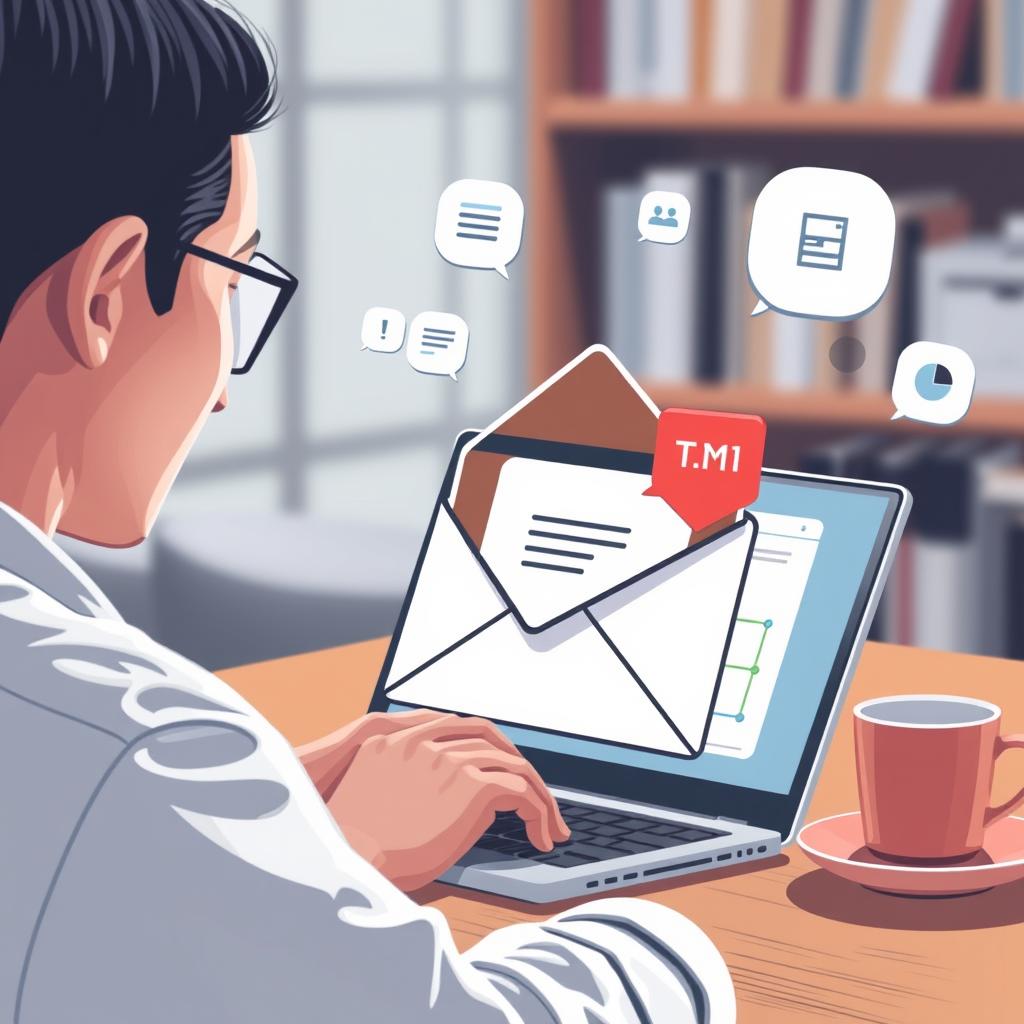Elevate Your Email Game: Mastering User-Centric Communication
Estimated Reading Time: 7 minutes
- Transform email communications into a powerful tool for productivity and engagement.
- Focus on personalization, accessibility, and relevance to enhance user experience.
- Utilize advanced analytics to track the effectiveness of your email strategies.
- Address potential challenges to ensure a smooth transition to user-centered flows.
Table of Contents
- The Unholy Trinity: Personalization, Accessibility, and Relevance
- The Ripple Effect: Productivity, Engagement, and Employee Experience
- Measuring What Matters: Analytics and Feedback
- Examples and Templates
- Navigating the Minefield: Potential Challenges and Mitigation Strategies
- Email’s Role in the Grand Scheme
- The Path Forward: Embrace User-Centricity or Perish
The Unholy Trinity: Personalization, Accessibility, and Relevance
To shift email from being a burden to a blessing, organizations must focus on three fundamental principles:
1. Personalization: Beyond the First Name
Personalization can take many forms, and including a recipient’s name in an email greeting is merely scratching the surface.
- Behavioral Segmentation: Develop comprehensive employee profiles based on past interactions with emails to determine what content works for each individual. For example, if an employee consistently engages with project updates but ignores promotional content, tailor their communications accordingly.
- Preference Centers: Give employees control over the types of emails they receive by allowing them to select their preferences for content type, format, and delivery frequency. This empowerment fosters engagement and reduces message fatigue.
- Personalized Recommendations: Utilize AI to tailor content suggestions based on individual roles and ongoing projects. Much like how streaming services provide customized viewing recommendations, AI can enhance the relevance of internal communications.
Quantifiable Impact: A tech company that implemented personalized email flows saw a 30% increase in employee engagement scores and a 20% decrease in unsubscribe rates—proof that personalization yields measurable results.
2. Accessibility: A Moral and Legal Imperative
Accessibility should be viewed as a cornerstone of your email strategy. Here’s how:
- Alternative Text for Images: Ensure that all images include descriptive alt text. This small adjustment can have a significant impact on making content inclusive.
- Clear and Concise Language: Write in plain language to make emails easily understandable. Treat your audience like busy professionals who are seeking quick and effective communication.
- Sufficient Color Contrast: Maintain contrast between text and backgrounds to ensure readability for everyone, including those with visual impairments.
- Keyboard Navigation: Optimize emails for keyboard navigation to accommodate all users.
- Screen Reader Compatibility: Test your emails with various screen readers to guarantee that the content is fully interpretable.
Quantifiable Impact: An organization that focused on improving email accessibility by providing transcripts for video content reported a 40% drop in help desk tickets related to access issues.
3. Relevance: Cutting Through the Noise
In an era of information overload, the relevance of content cannot be overstated. Follow these practices to ensure your emails hit the mark:
- Email Segmentation: Tailor your email lists based on demographics, roles, job functions, and past interactions.
- Content Prioritization: Present the most important information at the beginning of your emails to capture attention.
- Frequency Management: Avoid overwhelming employees by limiting the number of emails they receive each day.
- Intelligent Routing: Use AI to ensure emails reach only the most relevant audience.
Quantifiable Impact: A consulting firm that employed AI to filter and prioritize emails reported a 25% reduction in email fatigue, resulting in a 15% boost in employee productivity.
The Ripple Effect: Productivity, Engagement, and Employee Experience
User-centered email flows contribute significantly to the overall workplace environment. They lead to increased productivity, engagement, and enhanced employee experience:
- Productivity: By reducing the time employees spend searching for information, user-centric email flows streamline decision-making. For instance, a tech company reported a 15% increase in task completion rates post-implementation.
- Engagement: Personalized, relevant content fosters a sense of belonging, and studies have shown that organizations implementing these strategies see a boost in overall employee satisfaction.
- Employee Experience: Improved communication reduces stress and supports work-life balance while gradually increasing transparency within organizations. A financial services company noted a 10% decrease in turnover after adopting user-centric email flows.
Measuring What Matters: Analytics and Feedback
To evaluate the effectiveness of user-centered email communications, organizations must track key metrics while also gathering qualitative feedback:
- Advanced Email Analytics: Implement methods like A/B testing, segmentation analysis, and real-time reporting to refine communications.
- Qualitative Data Gathering: Conduct sentiment analyses, focus groups, and interviews to understand employee feedback.
Examples and Templates
When it comes to implementing your new email strategy, consider the following actionable steps and templates to guide your organization:
Email Communication Plan Template
- Define Objectives: Outline what you want to achieve with your email communications (e.g., employee engagement, project updates).
- Identify Audience: Segment your audience based on relevance.
- Craft Personalized Content: Tailor content based on what you know about your employees’ interests and needs.
- Implement Accessibility Features: Ensure your emails are compliant and user-friendly.
- Measure Impact: Establish metrics for evaluating engagement and effectiveness.
Get Started: For tailored support and comprehensive resources in honing your email strategy, visit professionalizeitto.me. Whether you’re looking to subscribe to our newsletter for ongoing insights, book a consultation, or access premium tools, we have the resources to help you excel in professional communications.
Actionable Tips for Effective Email Communication
- Subject Line: Keep it clear and relevant. E.g., “Upcoming Project Deadline: Key Steps and Resources”
- Introduction: Briefly state the email’s purpose.
- Body: Use bullet points to present information succinctly.
- Call to Action: End with a clear directive, whether it’s to provide feedback, fill out a survey, or reaffirm participation in a project.
Navigating the Minefield: Potential Challenges and Mitigation Strategies
The transition to user-centered email flows can face several obstacles. Here are key challenges and suggested mitigation tactics:
- Data Privacy Concerns: Formulate strict data privacy policies and maintain transparent communication with employees regarding data use.
- Technical Limitations: Choose flexible and scalable email tools that integrate effectively with existing infrastructure.
- Resistance to Change: Engage employees in the decision-making process to demonstrate the value of new strategies.
Email’s Role in the Grand Scheme
Email remains a critical communication channel, ideally suited for detailed announcements and important information that require comprehensive explanations. Pair it strategically with other communication platforms like instant messaging for quick questions and video conferencing for complex discussions.
The Path Forward: Embrace User-Centricity or Perish
The evidence is compelling: user-centered email flows are essential for success in the hybrid workplace. Those who invest in personalization, accessibility, and relevance will enjoy increased productivity and employee satisfaction, while organizations that stick to outdated practices risk being left behind.
So, what are you waiting for? The time to reclaim the power of email is now. Visit professionalizeitto.me to explore how you can transform your email communication for the better.
FAQ
1. Why is user-centric email communication important?
User-centric email communication enhances productivity and employee engagement by ensuring that messages are personalized, accessible, and relevant.
2. What are some best practices for email accessibility?
Best practices include using alternative text for images, writing in clear and concise language, ensuring sufficient color contrast, and testing with screen readers.
3. How can I measure the effectiveness of my email communications?
You can measure effectiveness by implementing advanced email analytics, conducting A/B testing, and gathering qualitative feedback from employees.
4. What is the role of personalization in email strategy?
Personalization helps tailor content to individual preferences and behaviors, leading to higher engagement rates and lower unsubscribe rates.
5. How can I optimize email frequency for employees?
To optimize email frequency, assess employee feedback and analytics, segment email lists effectively, and prioritize important communications while reducing unnecessary messages.


